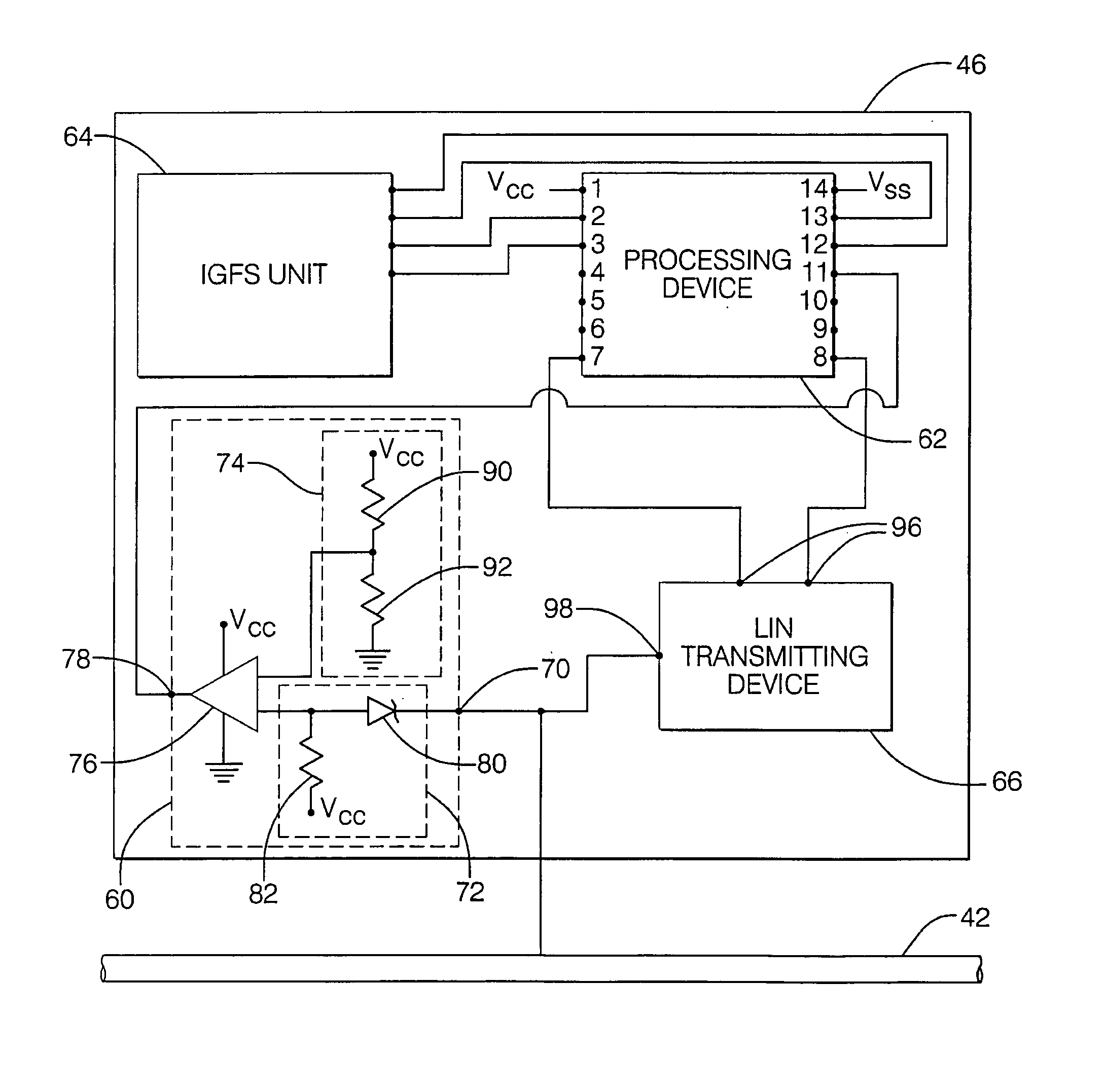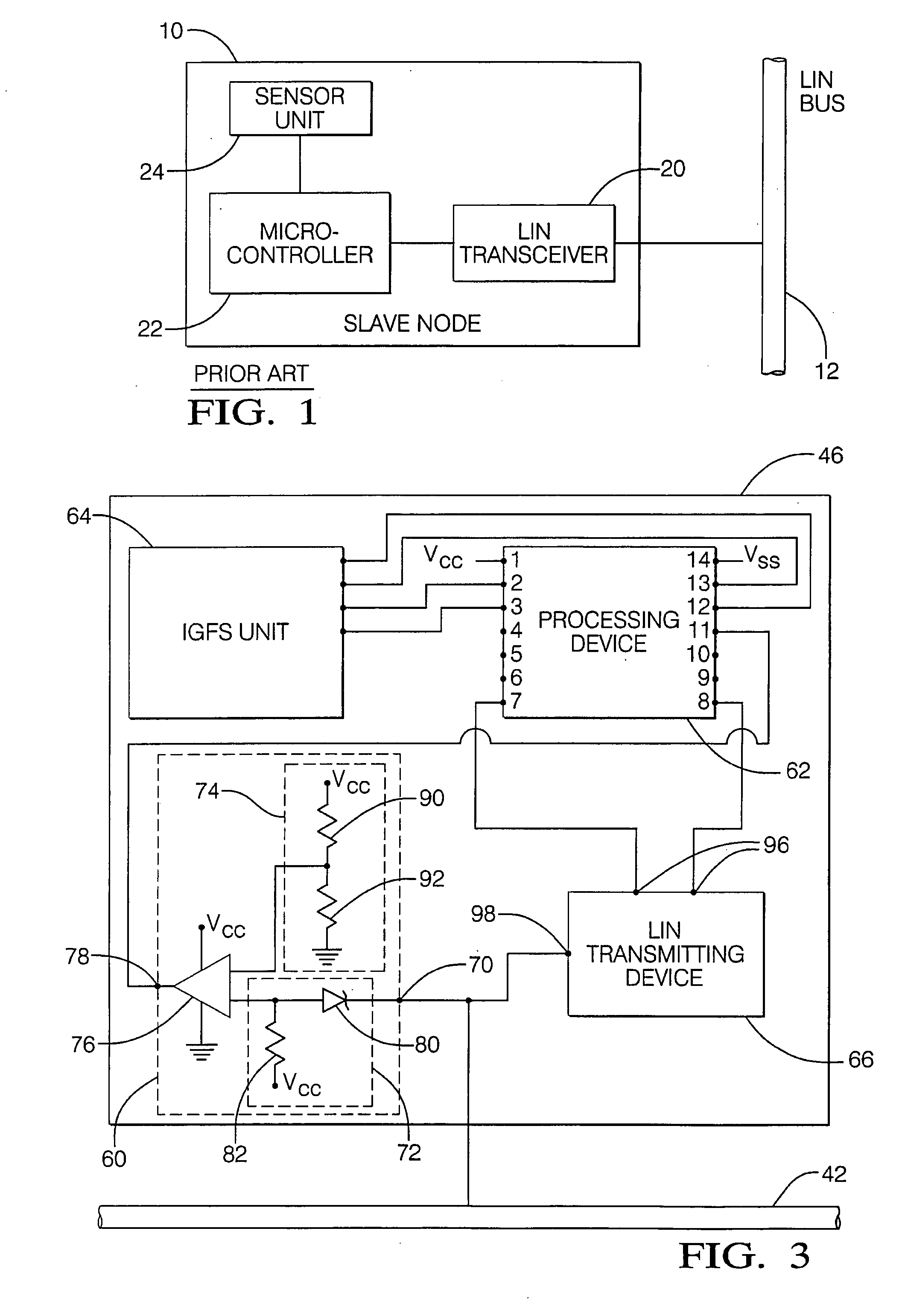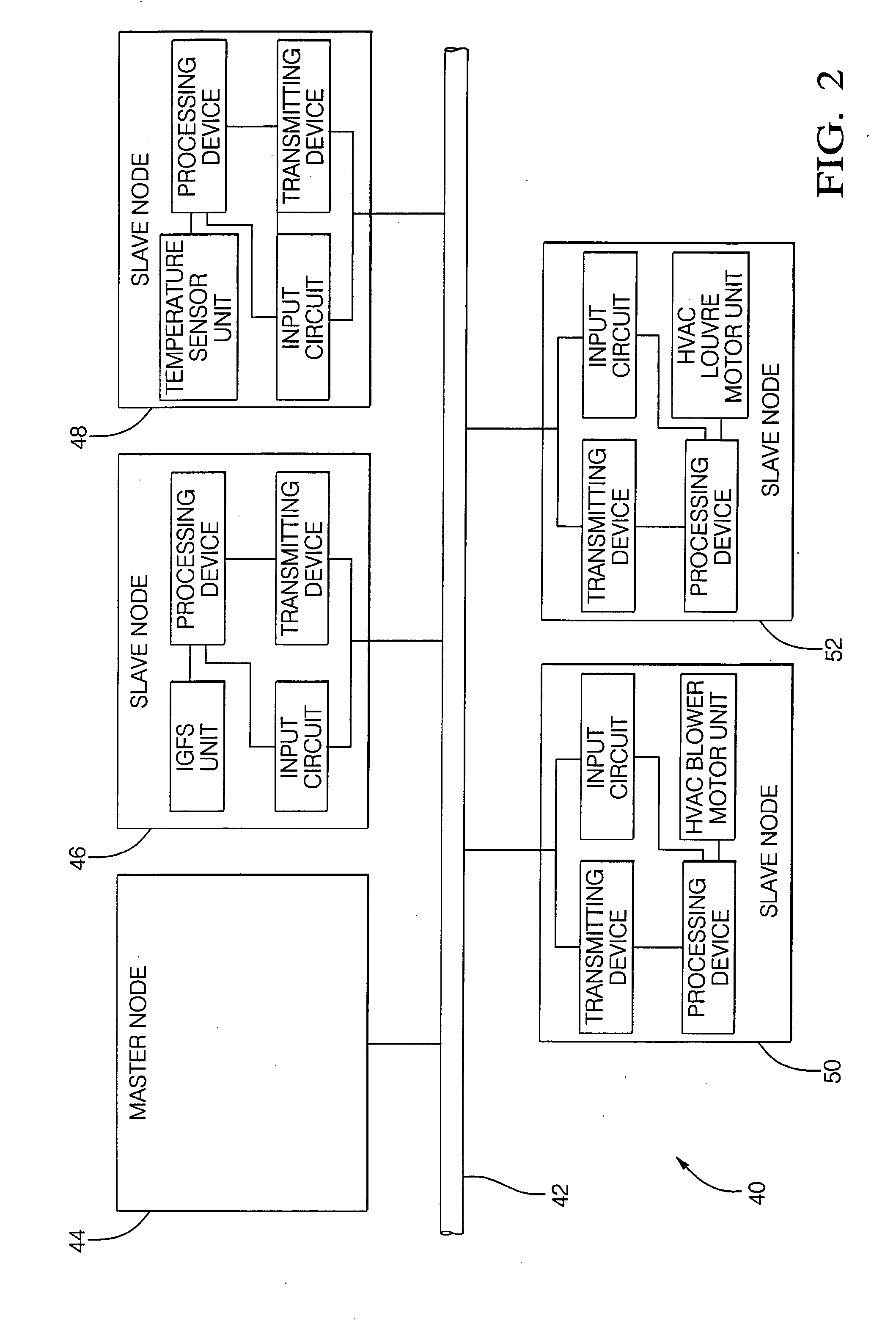Slave node and local interconnect network (LIN network) having same
a technology slave node, which is applied in the field of local interconnection network, can solve the problems of increasing the current draw caused by lin transceiver waking up each time a request is put on lin bus, affecting the overall current being drawn by slave, and reducing the size of packaging, power consumption and/or operating temperature.
- Summary
- Abstract
- Description
- Claims
- Application Information
AI Technical Summary
Benefits of technology
Problems solved by technology
Method used
Image
Examples
Embodiment Construction
)
[0016] With reference to FIG. 2, there is shown a portion of a vehicle Heating Ventilation Air Conditioning (HVAC) LIN network 40 that is preferably, but not necessarily, designed for use with a larger Controller Area Network (CAN). This particular LIN network is simply being provided for exemplary purposes, as the slave nodes of the present invention could be used in any LIN network, including those used with a vehicle's seat, door or window controls, remote keyless entry (RKE), exterior and interior mirrors, steering wheel, sunroof, compass, lights, engine sensors, etc. Furthermore, the number of slave nodes in the LIN network could be greater than or less than that of the exemplary portion of network 40 shown here.
[0017] LIN network 40 is a single-wire serial communications network that generally includes a LIN bus 42, a master node 44, a glass fog sensor slave node 46, a temperature sensor slave node 48, an HVAC blower motor slave node 50 and a HVAC louver motor slave node 52....
PUM
 Login to View More
Login to View More Abstract
Description
Claims
Application Information
 Login to View More
Login to View More - R&D
- Intellectual Property
- Life Sciences
- Materials
- Tech Scout
- Unparalleled Data Quality
- Higher Quality Content
- 60% Fewer Hallucinations
Browse by: Latest US Patents, China's latest patents, Technical Efficacy Thesaurus, Application Domain, Technology Topic, Popular Technical Reports.
© 2025 PatSnap. All rights reserved.Legal|Privacy policy|Modern Slavery Act Transparency Statement|Sitemap|About US| Contact US: help@patsnap.com



